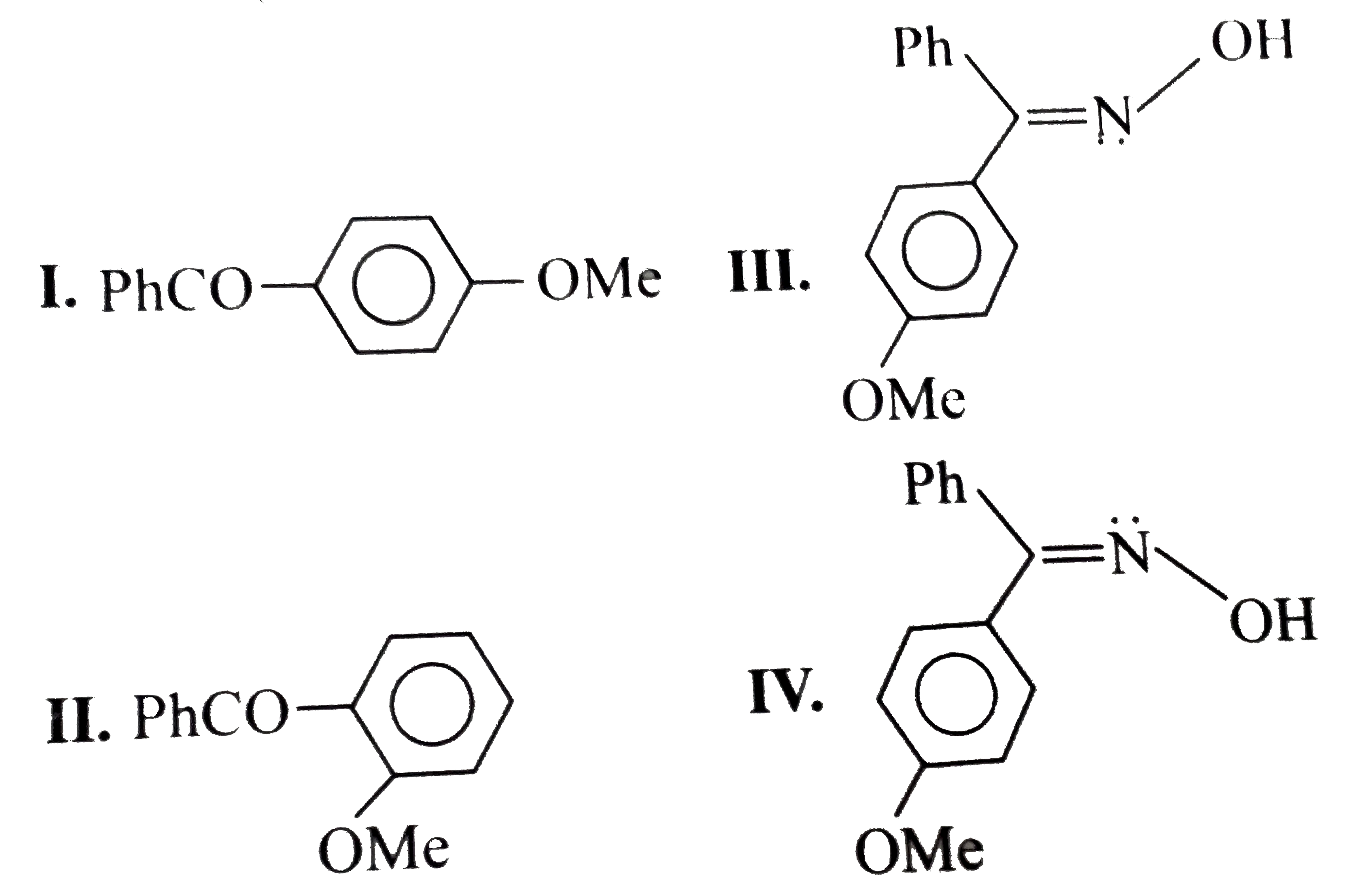A+H2O→B+HCl
B+H2O→C+HCl
Compound (A), (B) and (C) will be respectively:
PCl5,POCl3,H3PO3
PCl5,POCl3,H3PO4
SOCl2,POCl3,H3PO3
PCl3,POCl3,H3PO4
The correct Answer is:B
To solve the problem, we need to identify the compounds A, B, and C based on the hydrolysis reactions provided:
1. Identify Compound A:
The first reaction is A+H2O→B+HCl. A common compound that hydrolyzes to produce HCl is phosphorus pentachloride (PCl5). When PCl5 reacts with water, it hydrolyzes to form phosphorus oxychloride (POCl3) and hydrochloric acid (HCl).
Therefore, we can conclude:
- A = PCl5
2. Identify Compound B:
From the first reaction, we have established that B is phosphorus oxychloride (POCl3). The next reaction is B+H2O→C+HCl. When POCl3 undergoes hydrolysis, it reacts with water to produce phosphorous acid (H3PO3) and HCl.
Therefore, we can conclude:
- B = POCl3
3. Identify Compound C:
From the hydrolysis of POCl3, we found that it produces phosphorous acid (H3PO3). Thus, we can conclude:
- C = H3PO3
In summary, the compounds A, B, and C are:
- A = PCl5
- B = POCl3
- C = H3PO3
Final Answer:
- A = PCl5
- B = POCl3
- C = H3PO3
The first reaction is A+H2O→B+HCl. A common compound that hydrolyzes to produce HCl is phosphorus pentachloride (PCl5). When PCl5 reacts with water, it hydrolyzes to form phosphorus oxychloride (POCl3) and hydrochloric acid (HCl).
- A = PCl5
From the first reaction, we have established that B is phosphorus oxychloride (POCl3). The next reaction is B+H2O→C+HCl. When POCl3 undergoes hydrolysis, it reacts with water to produce phosphorous acid (H3PO3) and HCl.
- B = POCl3
From the hydrolysis of POCl3, we found that it produces phosphorous acid (H3PO3). Thus, we can conclude:
- C = H3PO3
- A = PCl5
- B = POCl3
- C = H3PO3
- A = PCl5
- B = POCl3
- C = H3PO3
Topper's Solved these Questions
- BOOK - VK JAISWAL ENGLISHCHAPTER - p-BLOCK ELEMENTSEXERCISE - LEVEL 3 (PASSAGE TYPE)17videos
p-BLOCK ELEMENTS
- BOOK - VK JAISWAL ENGLISHCHAPTER - p-BLOCK ELEMENTSEXERCISE - ONE OR MORE ANSWERS IS/ARE CORRECT95videos
p-BLOCK ELEMENTS
- BOOK - VK JAISWAL ENGLISHCHAPTER - p-BLOCK ELEMENTSEXERCISE - SUBJECTIVE PROBLEMS35videos
p-BLOCK ELEMENTS
- BOOK - VK JAISWAL ENGLISHCHAPTER - METALLURGYEXERCISE - ASSERTION-REASON TYPE QUESTIONS29videos
METALLURGY
- BOOK - VK JAISWAL ENGLISHCHAPTER - PERIODIC PROPERTIESEXERCISE - MATCH THE COLUMN11videos
PERIODIC PROPERTIES
Similar Questions
PCl5+H2O→B+HCI
B+H2O→C+HCI
The basicity of compound C will be:View SolutionCompound (A) (C8H8O) on treatment with NH2OH.HCl gives (B) and (C ). (B) and (C ) rearrange to give (D) and E, respectively, on treatment with acid. (B), (C ), (D), and (E ) are all isomers of molecular formula (C8H9NO). When (D) is boiled with alcoholic KOH, an oil (F) (C6H7N) separates out. (F) reacts rapidly with CH3COCl to give back (D). On the other hand, (E ) on boiling with alkali followed by acidification gives a white solid (G) (C7H6O2). Identify (A) to (G).
View Solution
Knowledge Check
- Question 1 - Select One
Identify the compound C in the following sequence:
(CH3)2CHCH2C≡NHCl,H2O−−−−−→compound A1.LiAlH4−−−−−→2.H2Ocompound BPC−−−−→CH2Cl2Compound CA(CH3)2CHO∣∣CCH3B(CH3)2CHCH2O∣∣COHC(CH3)2CHCH2O∣∣CHD(CH3)2CHO∣∣CCH2OH
Compound (A) (C8H8O) on treatment with NH2OH.HCl gives (B) and (C ). (B) and (C ) rearrange to give (D) and E, respectively, on treatment with acid. (B), (C ), (D), and (E ) are all isomers of molecular formula (C8H9NO). When (D) is boiled with alcoholic KOH, an oil (F) (C6H7N) separates out. (F) reacts rapidly with CH3COCl to give back (D). On the other hand, (E ) on boiling with alkali followed by acidification gives a white solid (G) (C7H6O2). Identify (A) to (G).
View SolutionKetone (A) NH2OH.HCl−−−−−−−−→ (B) H⊕−−→

The ketone (A) and compound (B), respectively, are:
Ketone (A)
I.
Compound (B)View SolutionIn the reaction HCl+H2O→H+3O+Cl−
View SolutionDiborane (B2H6) reacts independently with O2 and H2O to produce, respectively:
View SolutionCompound 'A' of molecular formula C4H10O on treatment with Lucas reagent at room temperature gives compound 'B'. When compound 'B' is heated with alcoholic KOH, it gives isobutene. Compound 'A' and 'B' are respectively :
View SolutionAldehyde (A) NH2OH.HCl−−−−−−−−→ (B) H⊕−−→MeNH2+HCOOH
Aldehyde (A) and compound (B), respectively are:
Aldehyde (A)
I. MeCHO II. HCHO
Compound (B)
III. View Solution
View SolutionI–Cl+H2O→HIO+HCl
View Solution

